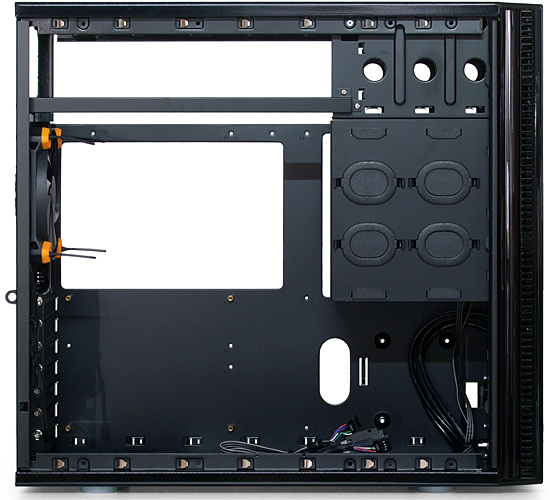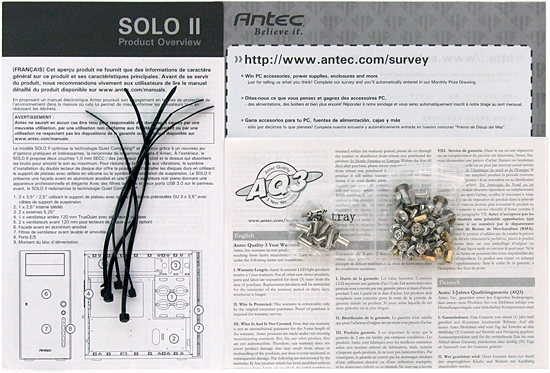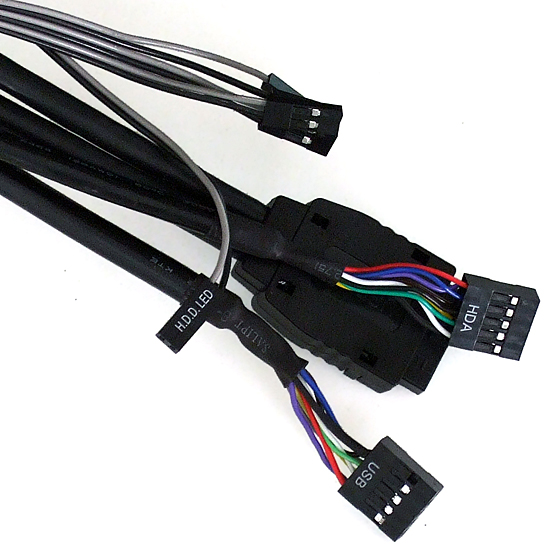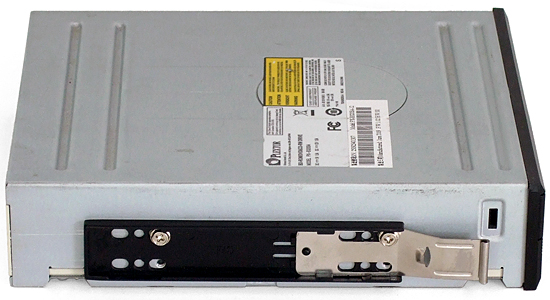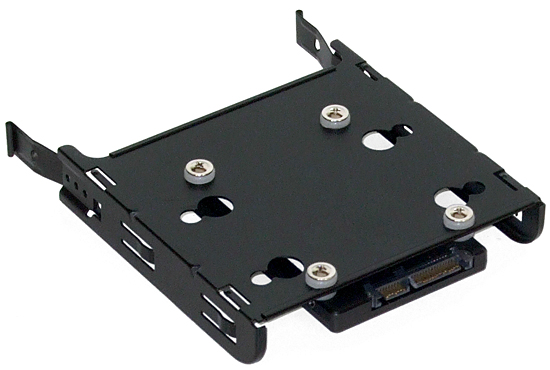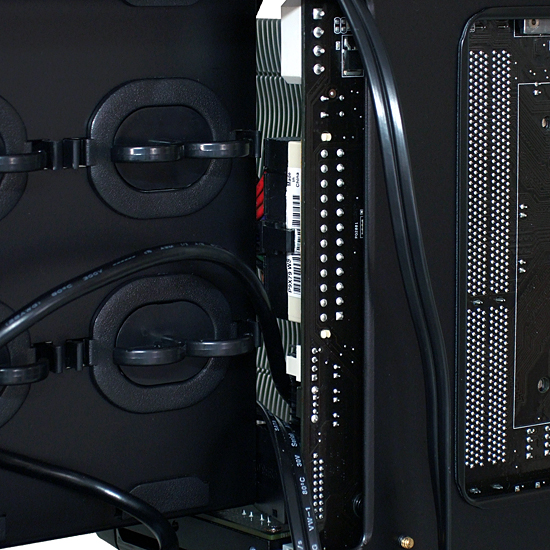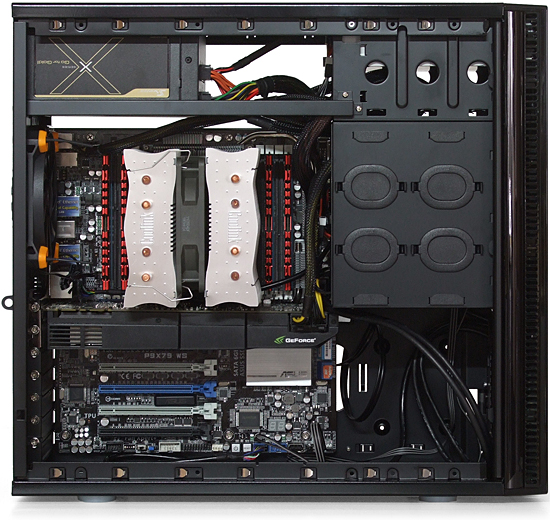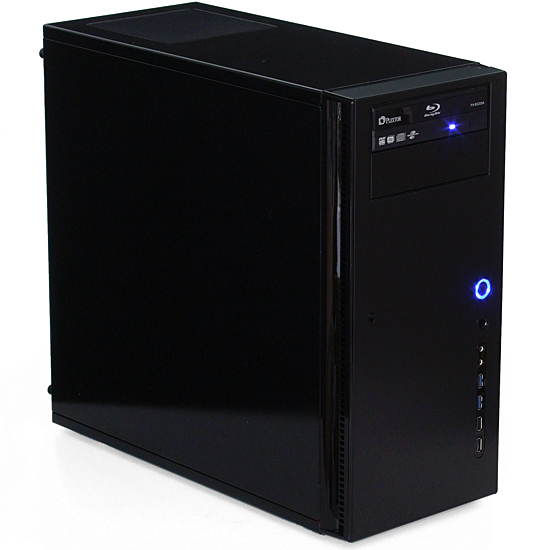The Final Five: Gaming Cases Between $80 And $120, Rounded-Up
Our 15-way shootout of cases priced between $80 and $120 ends as we compare the last five models to the previous ten, yielding an overall winner. Which chassis offers the best balance of quality, cooling, and noise reduction, and which is the best buy?
Building With The Antec Solo II
A member of Antec's Sonata family, the Solo II is primarily designed to be a low-noise performance case. It appears to be better-ventilated than some of the other models in its family. However, Antec bundles it with the fewest stock fans of any product in our 15-case round-up.
A vertical measurement of only 17.3” also makes the Solo II one of the lowest-height cases in our round-up, endearing it to buyers who prefer their computers sitting on top of a desk. That traditional mid-tower height is matched by a traditional top-mounted power supply opening, though Antec designs this case to hold its power supply with the fan facing up, drawing air from a top-panel vent.
The Solo II gives you the option to mount a 2.5” SSD on either the motherboard tray (ahead of the motherboard itself), or in a drive tray using a pack of included screws.
Recognizing that HD Audio has been the motherboard standard for many years, Antec ditches the old AC'97 lead. That cleans up the cable set, as does a ribbon-style LED/switch cable set. An internal USB 3.0 connector was one of the qualifications for today’s round-up.
Drive rails clipped to the inside of the case’s floor must be mounted with screws onto 5.25” drives before they are slid into external bays. A hinged face panel makes room for the slides.
Noise-dampening silicone grommets have to be removed from the wide-set holes and placed into the narrower holes to adapt the Solo II’s trays from the stock 3.5” to the optional 2.5” drive configuration. A front-panel door provides access to the hard drive cage.
Asus’ P9X79 WS is only 7/8” wider than the ATX standard. Yet, that fraction has caused us a great amount of grief in a few of our builds. The above photo shows that the board fits, but the latch of its main power cable hangs past the drive cage. We carefully forced these parts into place, and were pleasantly surprised when nothing was damaged or broken.
Get Tom's Hardware's best news and in-depth reviews, straight to your inbox.
The lack of any intake fan combines with an extra-tight fit to exacerbate our ventilation concerns.
Our finished system certainly looks great, though we’d probably choose slightly smaller parts if we were basing our builds on a chassis, and not picking a case based on the components inside.
Current page: Building With The Antec Solo II
Prev Page Making A Case For Performance And Value Next Page Building With The Corsair 400R-
dudewitbow idroidToms should do a review on high-end cases featuring EXTREME watercooling.Reply
the only tiny problem at the most part i see in that is that it would be slightly harder to test thermal efficiency, since its being cooled by water, rather than air + hsf so in a wc build, the thermal ratings will be extremely close. -
back_by_demand It would be nice to see a left-sided window case listing, there are definate advantages to a left sided window / upside down mobo configReply -
Crashman amuffinThe Antec Solo II is not a case meant for gaming.Well...Antec sent it anyway. Along with the Eleven Hundred. So they evidently had a plan.back_by_demandIt would be nice to see a left-sided window case listing, there are definate advantages to a left sided window / upside down mobo configDid you know that the reason many manufacturers abandoned the upside-down case was because some motherboard heat pipes supposedly didn't work right in that configuration?iknowhowtofixitBut, but, but.... The Phantom 410 is sooooo ugly...Eye of the beholder :)Reply
-
The Solo II would probably have done a little better with your LGA2011 / GTX580 setup, if Antec included at least one front intake fan. Any chance of a re-test with an added intake fan or two? :)Reply
-
antemon I'm a fan of smaller casesReply
I have a qx-2000 case from aerocool. it's a nightmare for cable management and upgrading partsm but I like it
can toms also do an in-depth article on smaller cases?
particularly, I want a similar case as the qx-2000 but the PSU is mounted at the bottom so that adding items inside woundnt be too much of a chore.
thermaltake armor a30 looks awesome, but still has a top mounted PSU
